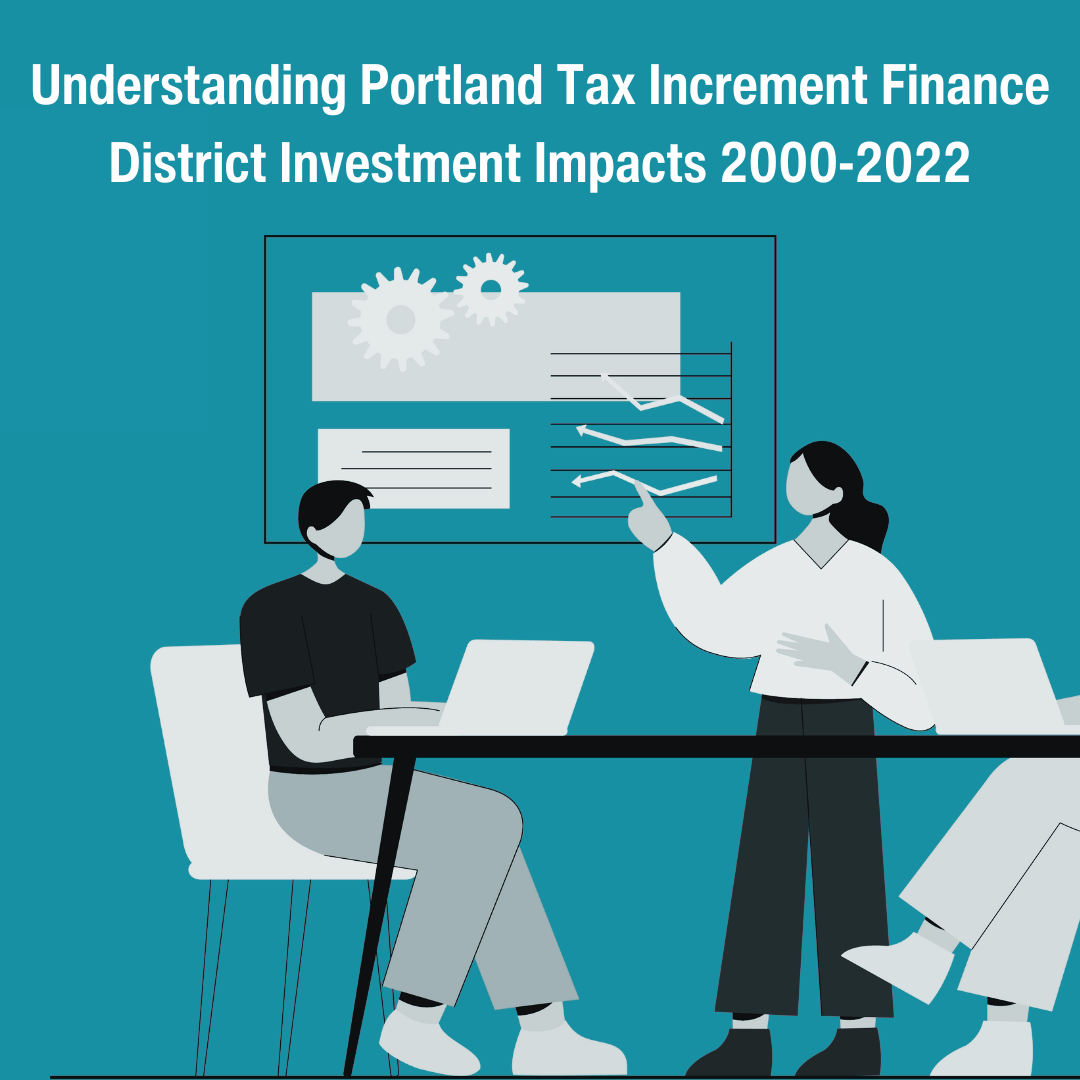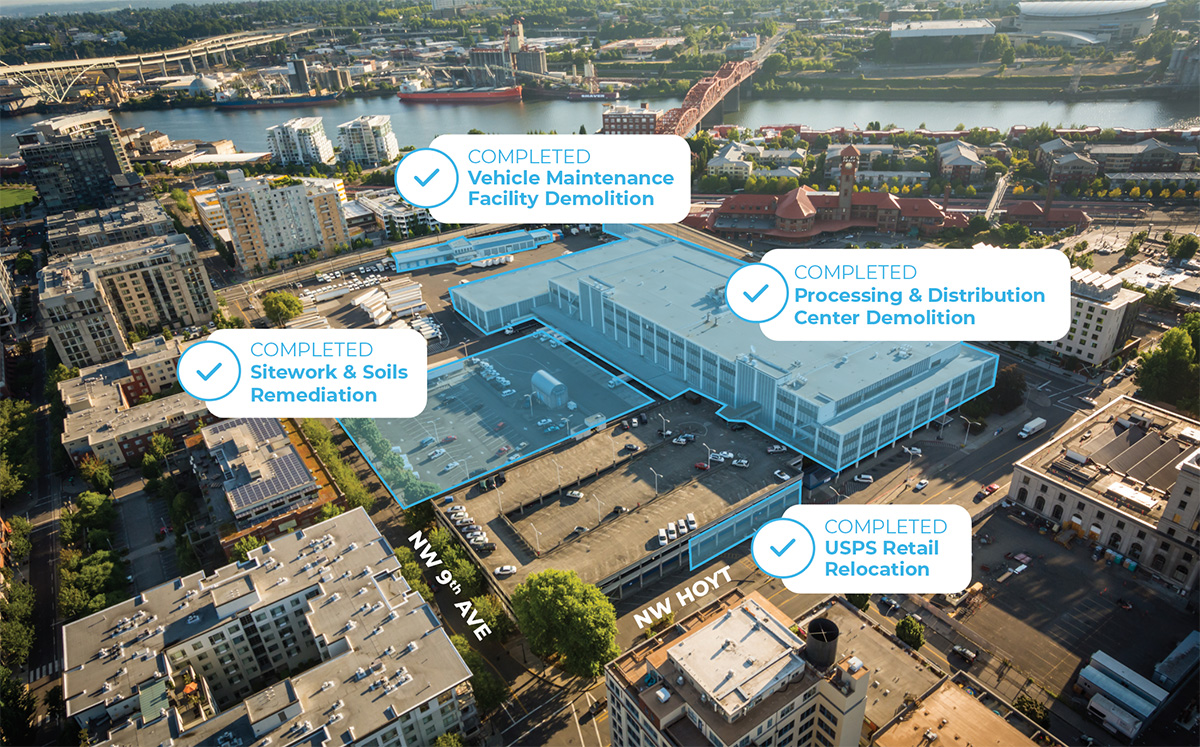The City of Portland has eleven urban renewal areas (also known as tax increment financing or TIF districts) that currently receive property taxes to pay for indebtedness. Each district issues debt to pay for projects and programs in accordance with the approved urban renewal plan and adopted budgets. A portion of each property taxpayer’s bill (shown as “Urban Renewal-Portland”) goes toward funding those districts, whether or not the property is within a tax increment finance district. The taxes are made up of two categories: “Division of Tax” revenue, and the citywide urban renewal special levy.
Urban Renewal “Division of Tax”: Urban renewal divide-the-taxes revenues are calculated by the county, based on the total district assessed value compared to the City’s total assessed value, and are collected from all property taxpayers within the City of Portland. As a taxpayer, you’re not paying this as an additional tax; a portion of the tax you already pay is split between taxing jurisdictions and the TIF districts, with the latter amount going to Prosper Portland for TIF district projects and programs. The amount of division-of-tax revenues received by each urban renewal area each year is calculated by multiplying the incremental assessed value of the area by the tax rate of that district. A smaller piece goes to the TIF district, and a larger piece goes to the taxing body.
Urban Renewal Special Levy: The citywide $15 million urban renewal special levy is an additional tax that helps retire TIF bonded indebtedness for older districts (Option 3 districts) that have a limited amount of “divide-the-tax” revenue. There are three remaining Option 3 TIF districts (Downtown Waterfront, South Park Blocks, and Oregon Convention Center). All three areas are expected to complete repayment of bonded indebtedness by 2025. The special levy share is paid at a rate of (in FY 2021-22) $0.1961 per $1,000 of assessed value.
In real-life terms, the money spent in TIF districts has funded large and small projects throughout Portland, including:
- The Portland Mercado, Pearl District park improvements, Hassalo on 8th, Museum Place, Eastbank Esplanade, Portland’s Rose Quarter, Portland-Milwaukie Light Rail, the Eastside Streetcar Loop, Tilikum Crossing, Dawson Park, Gateway Discovery Park, Lan Su Chinese Garden, Pioneer Place, Pioneer Courthouse Square, RiverPlace, Chinatown Gateway, renovation of historic Union Station, the South Waterfront Greenway, Asian Health & Service Center, Oliver Station, Lents Commons and the Woody Guthrie, the latter four all in Lents Town Center.
- Renovation of historic and underutilized buildings downtown into affordable housing. Examples include the Sally McCracken Building, the Golden West, Mark Hatfield Building and Swindells Building.
- 45% of all TIF district proceeds are allocated to affordable housing via Portland’s Housing Set Aside Policy. Administered by the Portland Housing Bureau, funds are used to create and rehabilitate affordable multifamily projects as well as single-family home repair and homeownership programs. Notable projects include 333 Oak, Rose City Village and the Maya Angelou. Loans for construction of new affordable rental housing include the St. Francis, Kafoury Commons, Betty Campbell, Rosemount Commons and Lovejoy Station.
- Significant economic development projects including OHSU’s Collaborative Life Sciences Building; Alberta Commons; recruitment of Vestas North America headquarters; the Shops at 10Y, retention of Iberdrola’s North American headquarters; launch of the Portland Neighborhood Prosperity Initiative Network; and the current development of the Broadway Corridor.
Information on how tax increment/urban renewal financing works and total taxes going toward the division of tax and the special levy can be referenced in the urban renewal section of the Tax Supervising and Conservation Commission Annual Report. Information on TIF district remaining maximum indebtedness, final year to issue debt, and TIF district budgets is available on our Budget page.



